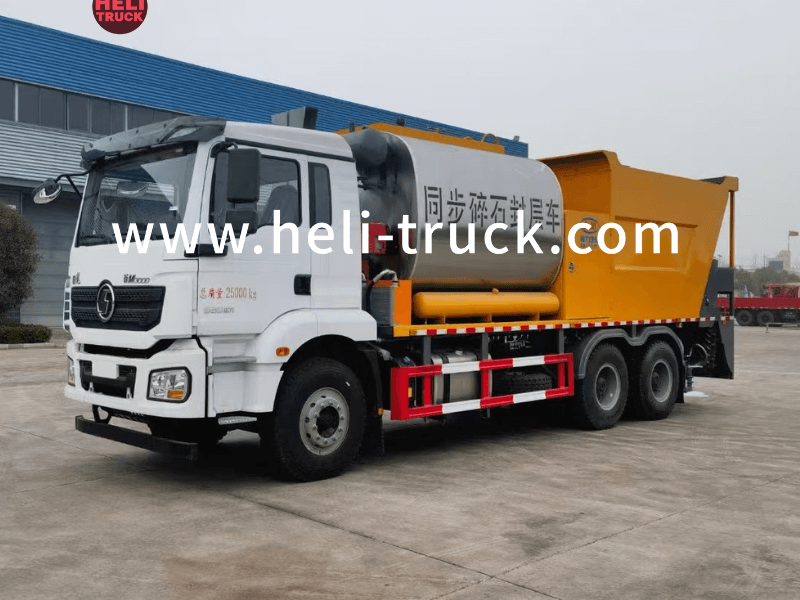The Evolution of Garbage Compactor Trucks for Efficient Waste Processing

Introduction
Garbage compactor trucks play a crucial role in the waste management industry by efficiently collecting and processing waste materials. These specialized vehicles have evolved over the years to become essential tools in keeping our cities clean and sustainable. In this article, we will delve into the history, design, operation, and benefits of garbage compactor trucks in waste processing.

History of Garbage Compactor Trucks
The concept of garbage compactor trucks dates back to the early 20th century when municipal waste collection became a growing concern in urban areas. Before the invention of compactor trucks, waste collection was a labor-intensive and inefficient process, often relying on manual labor and horse-drawn carts.
The first garbage compactor truck was patented in the 1930s by George Dempster, an American inventor. His design incorporated a hydraulically powered compactor mechanism that allowed waste to be compacted inside the truck, reducing the number of trips needed to transport the waste to the disposal site.
Over the decades, advancements in technology and engineering have led to the development of more sophisticated garbage compactor trucks. Today, these vehicles are equipped with advanced hydraulic systems, automated compaction mechanisms, and GPS tracking for efficient waste collection and processing.
Design of Garbage Compactor Trucks
Garbage compactor trucks come in various sizes and configurations to suit different waste collection needs. The most common types of compactor trucks include rear loader, front loader, and side loader models.
Rear loader compactor trucks are the most widely used type and are typically seen in residential areas. These trucks feature a rear-loading hopper that allows waste collectors to manually load garbage bins into the vehicle. Once the hopper is full, the compaction mechanism is activated to compress the waste, maximizing the truck's capacity.
Front loader compactor trucks are commonly used for commercial and industrial waste collection. These trucks are equipped with a front-loading arm that can lift and empty large dumpsters into the vehicle. The compacted waste is then stored in a sealed container for transportation to the disposal site.
Side loader compactor trucks are designed for areas with limited access or narrow streets. These trucks feature a side-loading mechanism that allows waste collectors to pick up garbage bins along the roadside. The waste is compacted inside the truck, reducing the frequency of trips needed for waste collection.
Operation of Garbage Compactor Trucks
Garbage compactor trucks are operated by trained waste collection professionals who follow strict safety protocols and procedures. The operation of these vehicles involves several key steps to ensure efficient waste collection and processing:
1. Route Planning: Before starting their shift, waste collectors plan their routes to optimize the collection process and reduce travel time. Refuse Compactor Truck helps minimize fuel consumption and emissions, making the waste collection process more sustainable.
2. Waste Collection: Waste collectors use the designated loading mechanism on the compactor truck to pick up garbage bins or dumpsters along their route. They ensure that the waste is properly loaded into the truck and positioned for compaction.
3. Compaction Process: Once the waste is loaded into the truck, the compaction mechanism is activated to compress the garbage and create more space inside the vehicle. This process helps maximize the truck's capacity and reduces the number of trips needed for waste collection.
4. Transportation to Disposal Site: Once the compactor truck is full, the waste is transported to a designated disposal site, such as a landfill or recycling facility. Waste collectors follow strict guidelines for waste disposal to ensure compliance with environmental regulations.
Benefits of Garbage Compactor Trucks
Garbage compactor trucks offer several benefits for waste processing and management, including:
1. Increased Efficiency: Garbage compactor trucks allow waste collectors to compact large volumes of waste, reducing the frequency of trips needed for waste collection. This increased efficiency helps save time, fuel, and labor costs.
2. Space Optimization: The compaction process used in these trucks helps maximize the available space inside the vehicle, allowing for more waste to be transported in each trip. This space optimization reduces the environmental impact of waste collection and disposal.
3. Improved Hygiene: Garbage compactor trucks are designed to contain and seal waste, preventing odors and leakage during transportation. This helps maintain a clean and hygienic environment in urban areas and reduces the risk of vermin infestation.
4. Environmental Sustainability: By reducing the number of trips needed for waste collection, garbage compactor trucks help lower fuel consumption and emissions, contributing to a more sustainable waste management system. These vehicles also play a key role in recycling and waste diversion efforts.
Conclusion
Garbage compactor trucks have come a long way since their inception in the early 20th century. These specialized vehicles have revolutionized the waste management industry by offering efficient, hygienic, and sustainable solutions for waste collection and processing. With ongoing advancements in technology and design, garbage compactor trucks will continue to play a vital role in keeping our cities clean and environmentally friendly.
